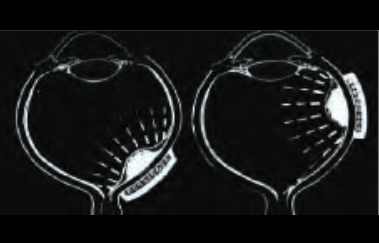 Radiation plays a key role in the treatment of ocular tumors.
Radiation plays a key role in the treatment of ocular tumors.
In many cases, radiation therapy offers a vision-sparing alternative to removing the eye. Dr. Finger has done extensive research in the use of eye and vision-saving radiation treatments and developed several pioneering techniques. Retina Today published Dr. Finger’s overview article on this research: “Radiation Therapy for the Retina Specialist: Innovations and pearls for the management of ocular tumors”.
The most commonly used forms of radiation therapy are external beam radiotherapy and ophthalmic plaque brachytherapy.
In ophthalmology, external beam radiation is most often used to treat choroidal metastasis, primary intraocular lymphoma, and less frequently retinoblastoma. The distribution of ocular radiation in tissue—how much goes to the targeted zone and how little goes to surrounding normal structures—affects the effectiveness of the treatment as well as the type and incidence of complications. There are numerous forms of EBRT using different energy levels and distributions. At The New York Eye Cancer Center, Dr. Finger will choose the technology that offers the best distribution of radiation dose for the patient’s specific condition.
Radioactive plaque therapy is the most common and widely used treatment for choroidal melanoma. This is because it is the most conformal to the tumor; it concentrates the radiation within the tumor and reduces the amount of energy delivered to normal structures compared with all forms of external beam radiation therapy.
Additionally, Dr. Finger has developed a slotted plaque that fits around the optic nerve, allowing doctors to treat hard to reach tumors around the nerve.
For more detailed information on the various forms of radiation therapy and how they are applied, read Dr. Finger’s article in Retina Today: “Radiation Therapy for the Retina Specialist”. Download the PDF now:









